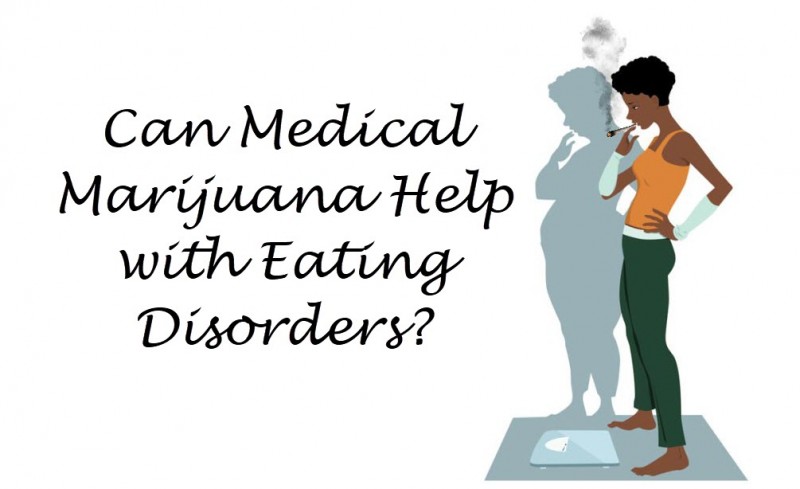Can Marijuana Help Treat Eating Disorders?
Can Cannabis Help with Eating Disorders (Appetite)? from CannabisNet on Vimeo.
While getting stoned can give you the munchies, more doctors are turning to weed as potential treatment for eating disorders.
With marijuana legalization upon us, more medicinal benefits of the plant are being discovered.
While it is already used to treat a wide range of illnesses from chronic migraines to cancer, more surprising benefits are starting to emerge for medicinal uses.
People who suffer from anxieties and depression about their body image and relationship with food may actually find relief from lighting up a joint. Not to mention the fact that most people tend to enjoy food once the psychoactive effects start kicking in. Once you get stoned, the “munchies” might just come around and make food more… appealing.
It is estimated that around 20 million American adults suffer from a bout with eating disorders at one point in their life. Do we have to wait for people to be lying in their deathbeds until they are given a second chance in life through alternative treatment with marijuana?
Alternative Treatment
Studies show that among all mental and psychological disorders, the mortality rate for anorexia nervosa is highest. The primary symptoms of anorexia are a severe loss of appetite which can actually occur as a result of taking medications or other psychological factors such as self- esteem issues. As a result of not eating for long periods of time, people who have anorexia suffer from extreme malnutrition, muscle loss, fatigue, and brittle bones. When left untreated, these will inevitably lead to death.
The science behind the munchies isn’t anything new. An increased appetite is one of the most famous side effects of getting stoned, something that people with eating disorchders can benefit from together with other kinds of complementary and alternative treatment as well as counseling. In fact, it is already being used to induce hunger in cancer patients who have a hard time building up an appetite because of chemotherapy.
Many studies have been conducted so that we can learn more about why marijuana actually gives you the “munchies”. In one of these scientific trials conducted by Tamas Horvath of New Haven’s Yale University, the findings showed that the answer lies in our CB1 receptors which are found in all of the body’s cells. When these cells were activated by using dronabinol, which is an anti-nausea drug as well as a component of cannabis, these CB1 receptors encourage the release of hormones that promote hunger. On the other hand, suppressing this activity may result in the opposite which can lead to weight loss. However it still remains unknown why the CB1 receptor can induce or reduce appetite - this is why some people experience the munchies and other’s don't.

Synthetic Marijuana Treats Appetite Loss
Compared to other kinds of diseases, there are still very few case studies that prove marijuana’s efficacy in treating eating disorders. However, a man-made version of marijuana known as Marinol is already being used to induce appetite in patients who are diagnosed with AIDS.
Marinol is also used to address side effects of chemotherapy including nausea and vomiting.
But just a little research will tell you that Marinol can have side effects such as dizziness, mood swings, confusion, anxiety, and sleeping problems. The question remains clear: why can’t these patients instead be given the real deal?
The problems still lie in legalization and access to medical marijuana, as well as perceptions that need to be changed.
Marijuana As An Option
While I’m not saying that marijuana should be used by everyone who is dealing with an eating disorder, it should definitely be included as an option to be considered by patients as well as their families. Given that the mortality rate for eating disorders is already high on its own, people need to be informed of the potential of the plant as treatment. It’s also wise to know that people with eating disorders are also highly vulnerable to comorbidity which means that the illness comes with other disorders such as depression or anxiety. Since pot affects everyone differently, using it as part of a treatment plan for eating disorders means that it can go in 2 possible directions: provide relief or heighten the uncomfortable feelings that fuel eating disorders.
However, given that we have more knowledge about the effects of different strains now more than ever before, this data can be tailored to recommend tailored treatment plans for patients.
Marijuana advocates should include eating disorders as one of the qualifying illnesses that would enable access to medical marijuana around the country. Easily over 20 million adults in America are suffering from eating disorders right this very minute, and that doesn’t even take into consideration the under-reported cases which shows the imaginable benefits of legalizing access to medical marijuana.
OTHER ARTICLES YOU MAY ENJOY...
DOES GETTING STONED GIVE YOU THE MUNCHIES, CLICK HERE TO READ...
OR...







